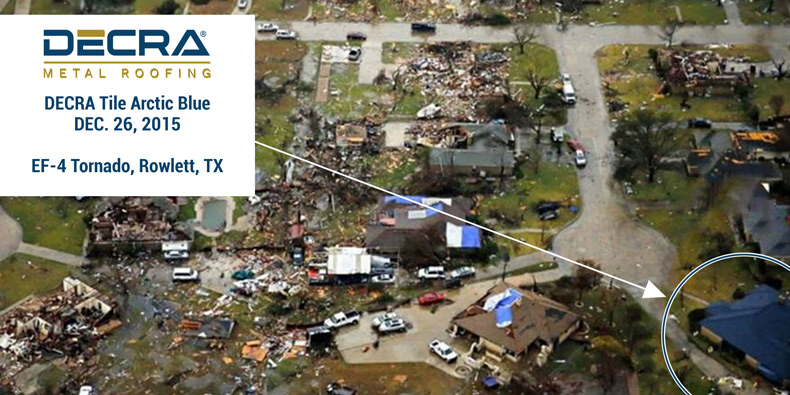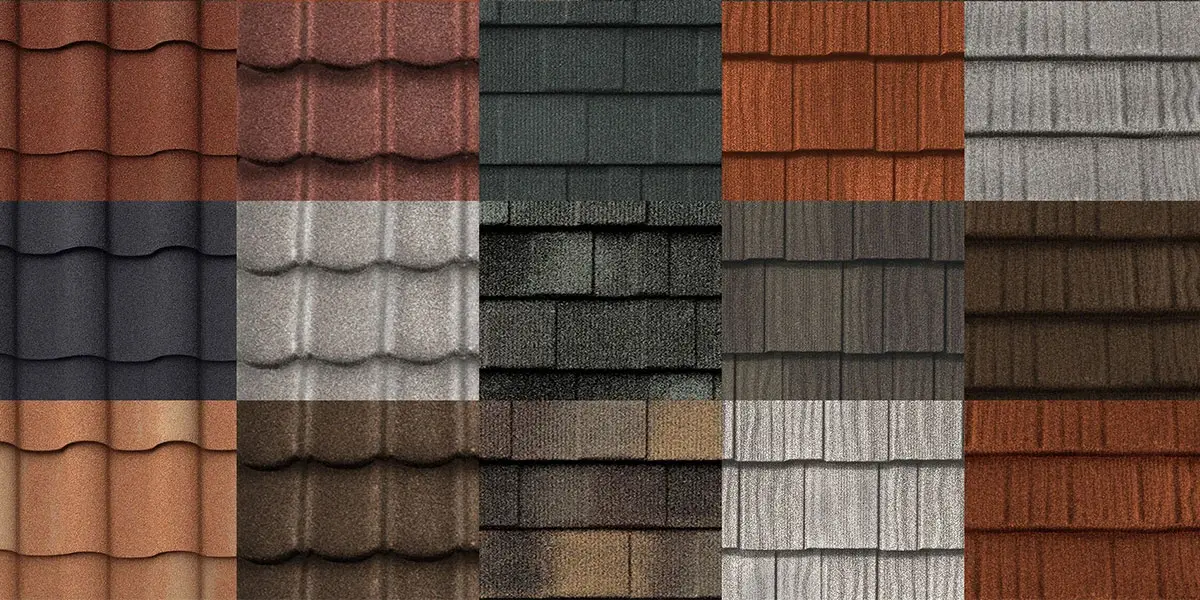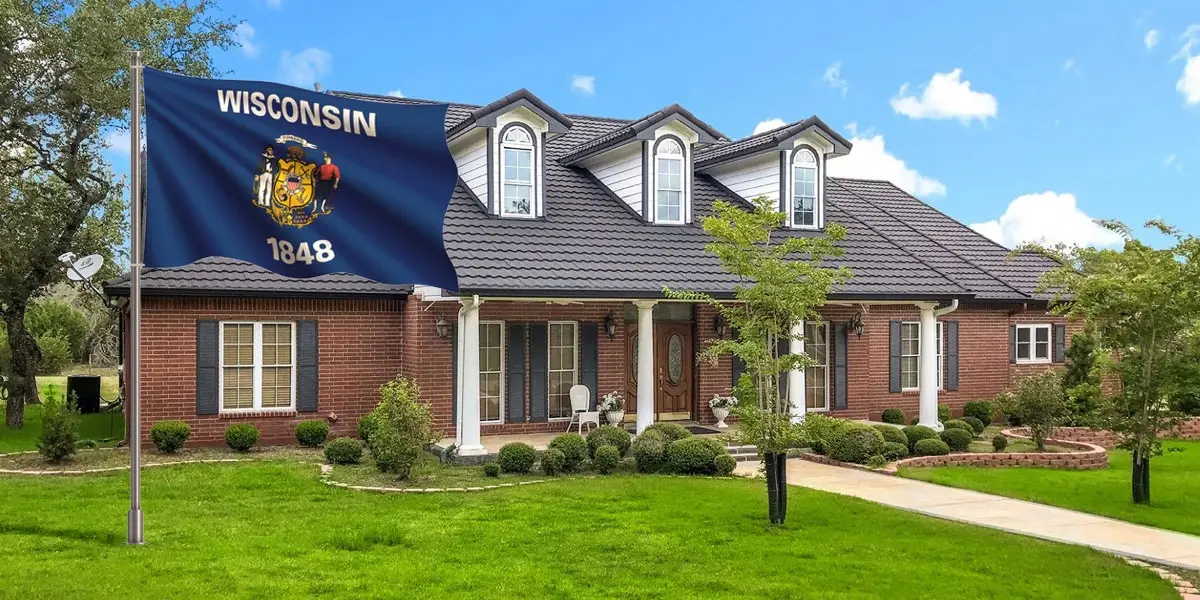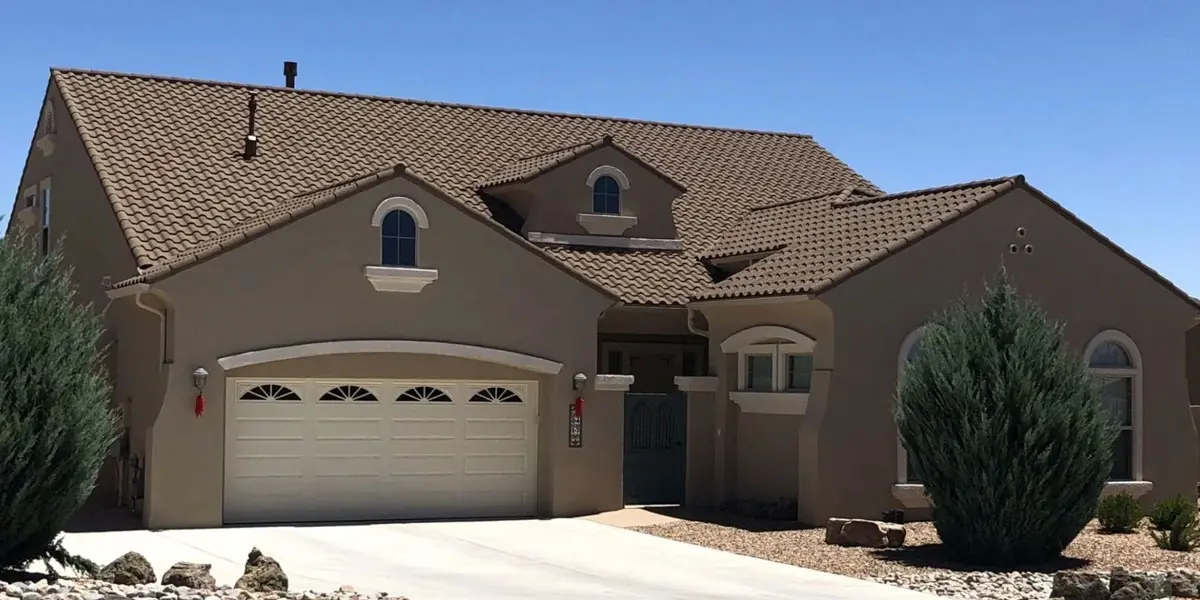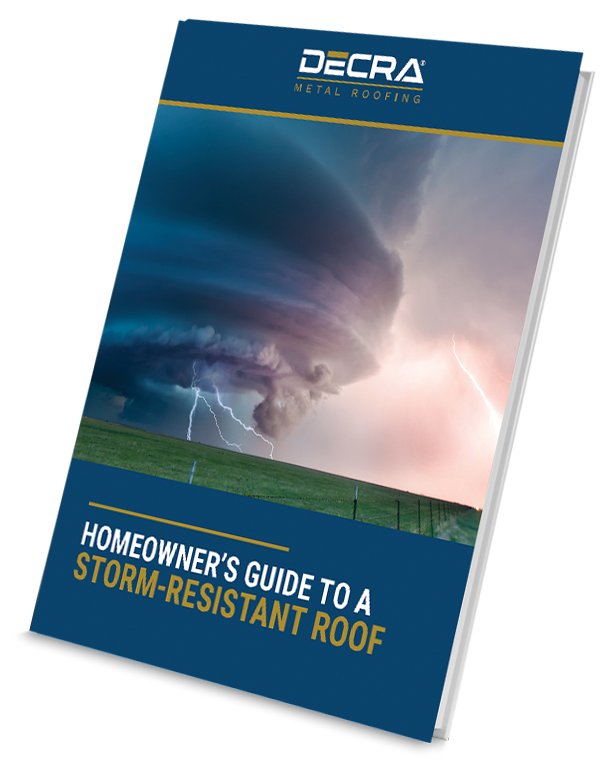Protection from more than just high winds is critical when it comes to tornados. As one of the strongest roofing materials on the market, a metal roof is ideal for homeowners in tornado-prone regions thanks to the protection it provides against wind, hail, wind-driven rain and storm debris.
In this article, we’ll cover what homeowners need to know about a tornado-resistant roof and the benefits of metal roofing, including:
- What to look for in a tornado-resistant roof.
- How traditional roofing materials perform against tornados.
- Why metal roofs are considered one of the best roofing materials for tornados.
What to Look for in a Tornado-Resistant Roof
Tornados are generated from intense thunderstorms. In addition to hurricane-force winds, these storms also bring hail, wind-driven debris and wind-driven rain, so you’ll want to look for a roof that protects against all of these conditions.
Hail and Wind-Driven Storm Debris
The impact from hail or storm debris–including asphalt shingles flying off your home–can be just as damaging as the high winds from a tornado. Be sure to find a roofing material that has a UL2218 Class 4 Impact Rating.
Underwriters Laboratories (UL) is an independent lab that tests and certifies roofing products. The UL2218 Impact Rating is considered the industry standard for a roof’s ability to withstand damage from hail or storm debris.
The impact resistance of a roof is tested by repeatedly dropping a 2” steel ball on the exact same spot from 20’ above. Based on the outcome of the test, a roof is assigned a rating from Class 1 to Class 4. To achieve a Class 4 rating, which is the highest possible rating, a roof must not exhibit any signs of fracture during the test.
High Winds
Tornados can generate high winds that are on par with hurricanes, so it’s prudent for homeowners to find a roofing material approved for high-velocity hurricane zones (HVHZ). For example, Miami-Dade County has the strictest building codes in the nation due to the frequent landfall from hurricanes that the region experiences. Even if your home isn’t located in a hurricane-prone region, look for a roof that meets the rigorous building codes for HVHZ.
Wind-Driven Rain
Wind-driven rain can enter the home through the roof, causing leaks, mold and other types of costly water damage. Look for a roofing material that has passed the TAS-100 test. Verified by an independent, third-party lab, the TAS-100 sprays the equivalent of 8" of rain per hour on a roof to confirm that the roof will prevent rain from penetrating the underlying roof deck. Here’s what the TAS-100 test looks like:
In addition to looking for a roof that is resistant to wind, hail and impact damage, many homeowners are surprised to learn that a lightweight roof is important for protecting a home against tornados.
When it comes to roofing, heavier isn’t always better.
Shear strength is the ability to resist forces that cause the internal structure to slide against itself. For example, in a reinforced concrete beam, the purpose of the rebar is to increase the shear strength. In roofing, the forces pushing on the structure are typically caused by hurricanes, tornados, earthquakes and severe storms. A home with an excessively heavy roof load is considered top-heavy and prone to side forces.
A lightweight roof will actually contribute to the roof’s reinforcing shear strength without piling on excess weight at the top of the building where it is the least desirable.
How Traditional Roofing Materials Perform Against Tornados
As mentioned earlier, a tornado-resistant roof needs to protect against more than just high winds. However, not all roofing materials are designed to withstand hail, storm debris impact and wind-driven rain.
Traditional roofing materials, such as asphalt shingles, clay or concrete tiles, and wood shingles or shakes have shortcomings in some, or all, of the categories that make up a tornado-resistant roof.
Even a weak tornado can easily strip asphalt shingles that have warped or fish-mouthed. The 73 -112 mph wind speeds of an EF-1 tornado are in the hurricane range, and once wind speeds reach 90 mph, it exceeds the rated wind resistance of a typical asphalt shingle roof. Asphalt roofs are prone to crack and split after exposure to the elements, causing the roof to loosen around the fasteners.
Clay tile, and wood shake or shingle roofs provide such inadequate protection against hail and storm debris impact that most aren’t warrantied for impact resistance at all.
Why are Metal Roofs Better in a Tornado?
One of the biggest advantages of a metal roof is its ability to resist cracking or splitting around the fasteners. The edges of metal panels don’t curl up to behave like air scoops, as is so common with asphalt shingles, when the wind makes its way up and over the roof’s surface.
This is because metal roofs don’t rely on nails, staples or adhesives in order to stay put. Rather, they are engineered to withstand high winds, using high-quality, corrosion-resistant screw fasteners and interlocking technology that keeps the roof firmly attached in high winds.
Most metal roofs, such as stone-coated metal roofing, have some of the highest ratings for wind uplift, a critical safety metric for building and testing roof systems for wind performance. This enables metal roofs to meet the strict building code requirements of HVHZ and pass the TAS-100 test for wind-driven rain.
When it comes to hail or storm debris impact, metal roofs carry the highest UL2218 hail impact rating and manufacturers, such as DECRA Metal Roofing, back their roofs up with a comprehensive Lifetime Limited Warranty covering hail impact up to 2.5 inches in diameter and winds up to 120 mph.
Metal roofs are also one of the lightest weight roofing materials on the market and contribute reinforcing sheer strength to the roof.
- Metal Roofing: Weigh up to 1.6 lbs. per square foot.
- Wood Shingles/Shakes: Weigh up to 4.5 lbs. per square foot
- Asphalt Shingles: Weigh up to 5 lbs. per square foot
- Clay or Concrete Tile: Weigh up to 10 lbs. per square foot
The benefits of metal roofing go far beyond protection from tornados and homeowners can look forward to other perks with metal, including:
- Last two to three times longer than traditional roofing materials, such as asphalt shingles.
- Provide energy savings as high as 25%.
- Get insurance discounts. For example, in Texas, a metal roof can lower your homeowner's insurance by up to 35% (check with your local insurance carrier for available discounts).
- Increase home value by up to 6%.
DECRA Metal Roofing for Protection from Tornados
DECRA Metal Roofing products have a long-established reputation for quality, durability and longevity. Manufactured at our facility in Corona, California, DECRA roofs are tested above and beyond the requirements to ensure the quality that DECRA is known for is present in each and every panel we produce. Since 1957, DECRA roofs have protected homes and buildings from tornados and nearly anything else Mother Nature has to offer.
Ready to see and feel the DECRA difference? Click here to order a free sample.

